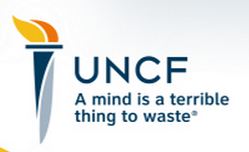 “What’s the difference between a tagline and a slogan?” This comes up at every workshop, talk or presentation I give.
“What’s the difference between a tagline and a slogan?” This comes up at every workshop, talk or presentation I give.
Periodically, I do research on the topic to see if anything new has been written or revealed. It is at these times when I am reminded that pretty much everyone is confused by these terms.
Let’s take a quick, yet big, step back: why do we care so much about defining these terms anyway?
Because there’s a sense that if you know what they are, and you have one of each, donors will flock to you. Your Facebook page will be like-erific; you will be swatting volunteers away like mosquitos on a hot night on the Bayou; etc, etc, etc.
Sorry, folks. None are a silver bullet. Most organizations benefit from having a tagline and sometimes a slogan can be useful. Another short, pithy, useful phrase is a mantra (which, as you’ll see below, is for internal use) and can be uber-helpful in avoiding mission drift.
All of these are windows into your organization’s story. Think of them like itsy bitsy parts of your story. They work with other parts–like your name, logo, website, etc–to tell a larger story–the story of why you’re doing the work you do in the way that you’re doing it.
This table explains what each is so you can decide which ones will be useful to you. It also gives examples so you can, hopefully, see the difference as the waters can get pretty muddy.
|
What it is
|
Example
|
| Tagline |
A short written statement that speaks to what you do and, ideally, why you do it. It should last a long time and works in conjunction with your name. It is read, not said. |
A mind is a terrible thing to waste. (United Negro College Fund)What happens in Vegas, stays in Vegas. (City of Las Vegas)Got milk? (Originally a slogan for an ad campaign created by the California Milk Processor Board that got ‘promoted’ to tagline status based on its success) |
| Slogan |
A short statement—sometimes said, but mostly read—that describes what is awesome about a product, service, campaign or event. |
Keep calm and carry on.(Ad campaign in U.K. at beginning of WWII.)A little dab’ll do ya.(Ad campaign for Brylcreem.)Where’s the beef? (Ad campaign for Wendy’s.) |
| Mantra |
2-3 words that are used internally to guide decision-making. |
Do no harm.Think different.Be brave and generous. |
In all instances, these short ditties should support a broader story–the story of why your organization is compelling enough to learn more about, donate to, volunteer with, tell someone else about…you get the point.

